Dinosaurs: Restoring Mongolia's fossil heritage
- Published
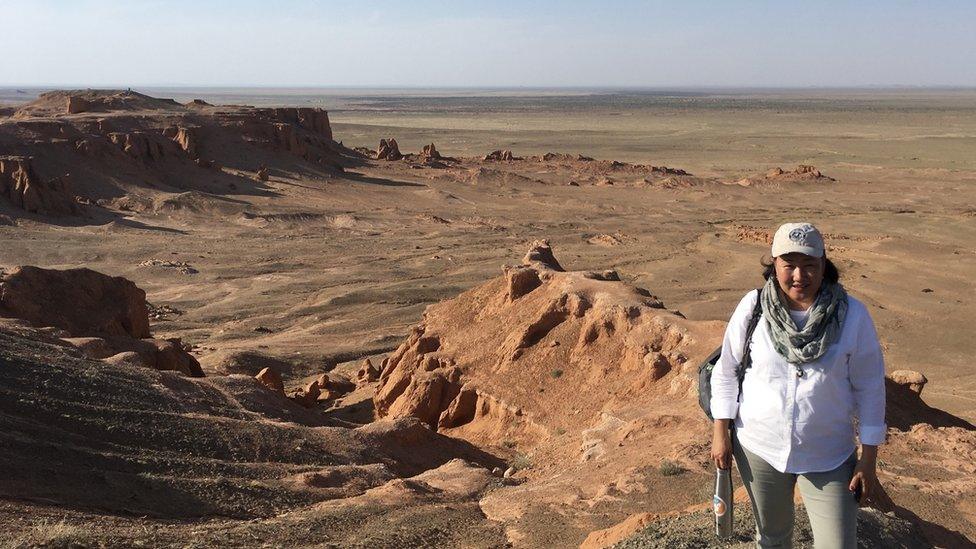
Bolortsetseg Minjin is on a mission to protect and celebrate the Gobi's fossil treasures
Eighty million years ago, during the Cretaceous Period, Mongolia's Gobi Desert was a dinosaur's paradise of vast valleys, freshwater lakes and a humid climate.
Mammal-eating velociraptors, lizard-hipped sauropods and spike-armoured ankylosaurs could have been spotted roaming in what are now the Martian red sandstone spires of Bayanzag's Flaming Cliffs.
These prehistorically favourable conditions make the Gobi Desert the largest dinosaur fossil reservoir in the world.
Over almost 100 years of palaeontological research in the Gobi, more than 80 genera have been found. But for many people living there, this scientific heritage remains unknown.
"Putting a fence up is not protection; protection is people's knowledge," Mongolian palaeontologist Bolortsetseg Minjin explains as we wind through the Flaming Cliffs in search of signs of fossil poaching.
It was here, nearly a hundred years ago, that the world's first dinosaur egg nests were found by American scientist Roy Chapman Andrews - the whip-wielding, trilby-wearing inspiration for Indiana Jones.
This discovery was a turning point in the palaeontological history of the world - the first proof that dinosaurs laid eggs.
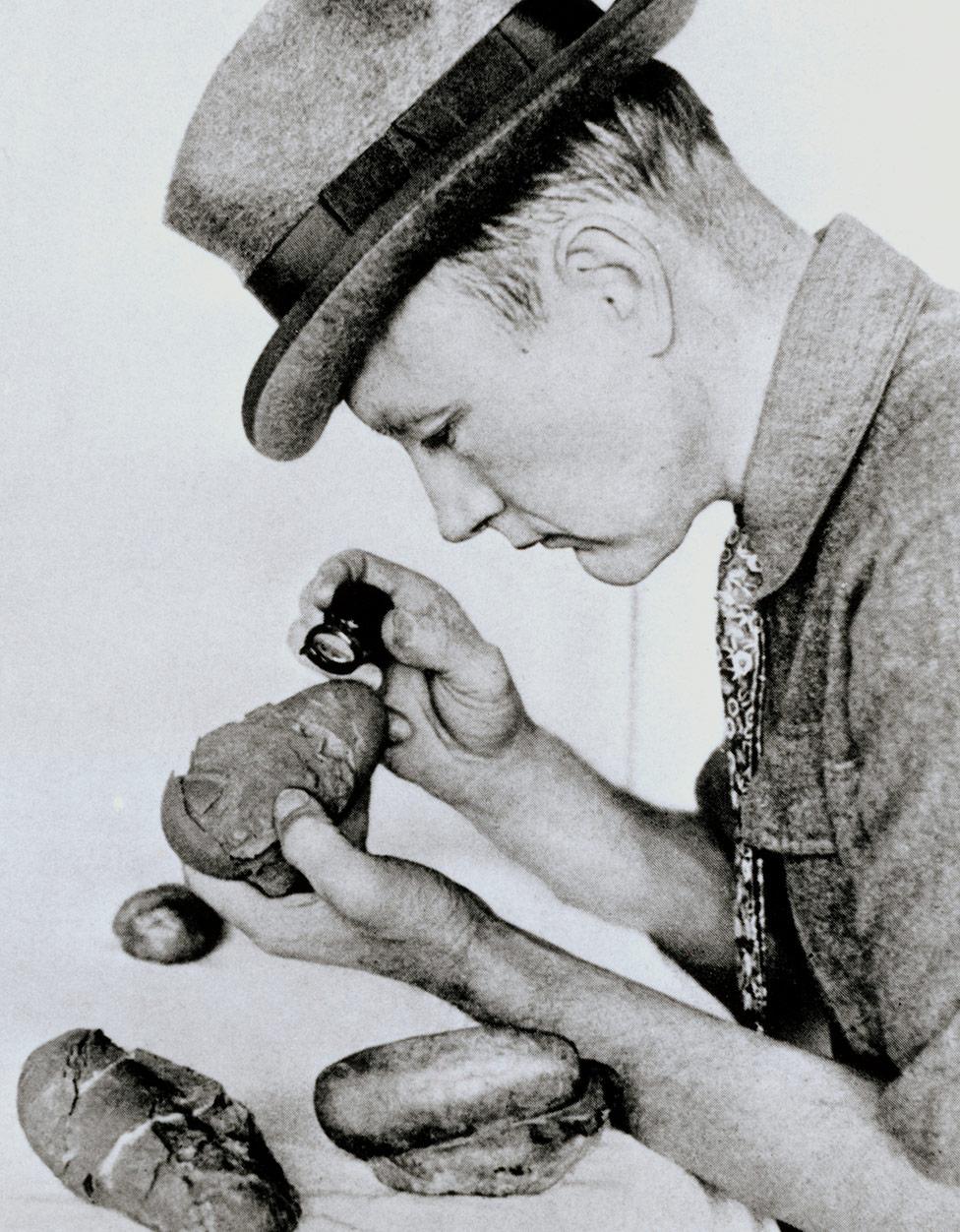
The American Roy Chapman Andrews worked in the region in the early 20th Century

In the space of just two years, his expedition team unearthed over 100 dinosaurs and took them home to the American Museum of Natural History where many stand today.
And in Bayanzag, renamed the Flaming Cliffs by Chapman-Andrews, little remains to mark this history.
There are no signs, maps or museums to give visitors information about these creatures. Fossil-poaching is rife and as we explored the site, motorcycle scramblers zigzagged over its prize excavation opportunities.
Unlike in America and the UK, where a finders keepers law applies if you happen to discover a T. rex lurking in your flower beds, in Mongolia, as with Brazil and China, any fossils found are state-owned and exports are strictly forbidden.
Yet, dinosaurs from fossil-rich sites like the Flaming Cliffs are still smuggled and find their way into premier auctions.
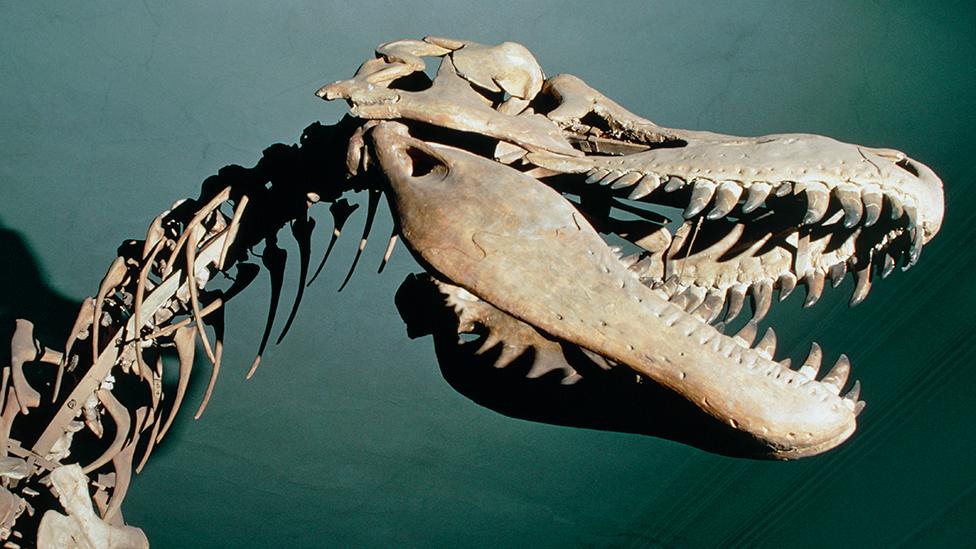
Efforts are now being made to bring back fossils that were taken abroad
Among the 30 stolen Mongolian fossils Bolortsetseg has worked to repatriate to date was a Tarbosaurus bataar, a rare cousin of the T. Rex. It had been bought by Hollywood actor Nicolas Cage.
And an earlier BBC investigation found that US Immigration and Customs Enforcement has seized $44m worth of smuggled dinosaur fossils in the last five years.
Bolortsetseg says the solution is education and dinosaur-based tourism.
It can be achieved, she believes, by inspiring the next generation of Mongolia's palaeontologists and teaching children in the communities local to these significant sites about their scientific importance.
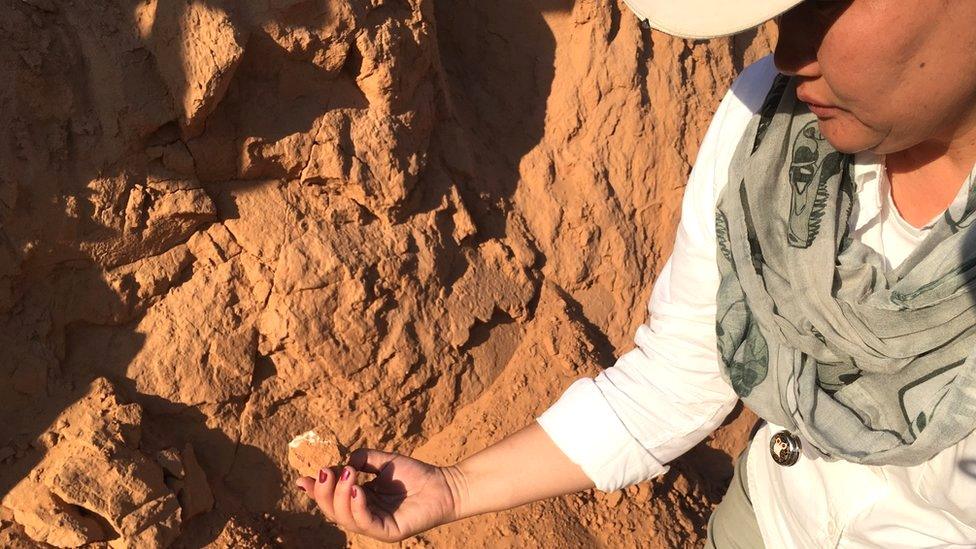
Like all good palaeontologists, Bolortsetseg has a sharp eye for fossils
She has excavated in the Gobi Desert for decades, starting professionally when the American Museum of Natural History had invited her palaeontologist father for a dig and allowed her to join too - but as a cook.
"After the first morning making them breakfast, they headed out to excavate so I just thought, I'll go too," she explains. Already with a masters in palaeontology in her early twenties and a prospector's knowledge of her local area - she was immediately spotting all manner of fossils and got invited back as a palaeontologist in her own right.
And now, through communities separated by thousands of miles of desert, Bolortsetseg has been driving a 37ft bus brimming with replica fossils - the originals never before seen by most Mongolians.
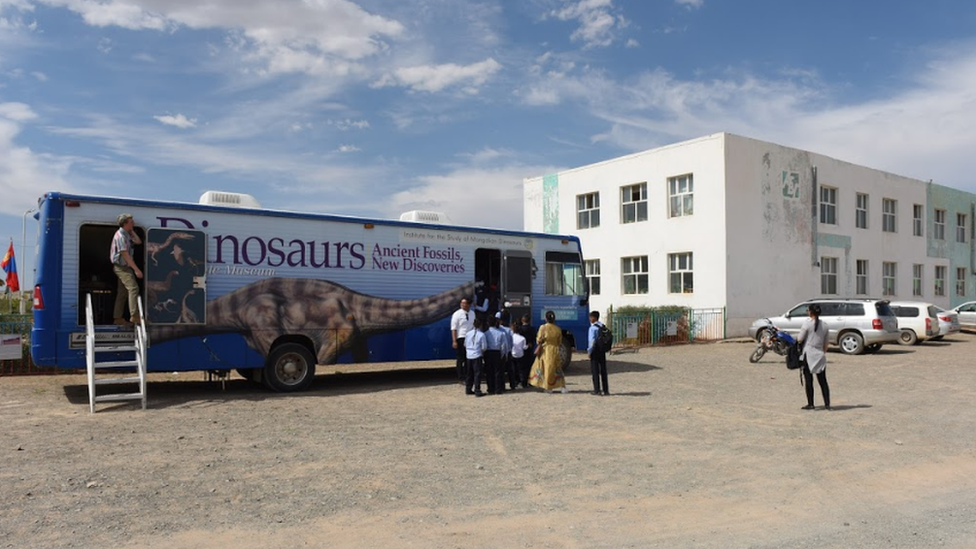
Bolortsetseg asked the American Museum of Natural History to donate the bus
"Even the kids who live right by the Flaming Cliffs often have no idea about the dinosaurs that have been found here, most can't name any dinosaurs and the bus is the first museum they've ever seen," Bolortsetseg explains.
Bolortsetseg founded the Institute for the Study of Mongolian Dinosaurs in 2007 and crowd-funded $46,000 for the museum's workshops across different regions.
Now the mobile museum stops off along dusty, bumpy off-roads through 11 provinces of the most remote parts of Mongolia.
"Before this, I didn't know anything about dinosaurs and now these things make me really proud," says 15-year-old Nyambayar Purevdorj, who lives next to the Tugrugiin Shiree site where the famous "fighting dinosaurs" (entwined fossils of a Velociraptor and a Protoceratops) were found.
Her classmate Badmaa Monhochir agreed: "I'd seen a little bit on TV but didn't know that they really lived millions of years ago. I thought it was just a legend or a children's story.
"In order to protect these fossils, we need to start from ourselves. People who are selling fossils have no knowledge and that's why we are learning now," she adds.
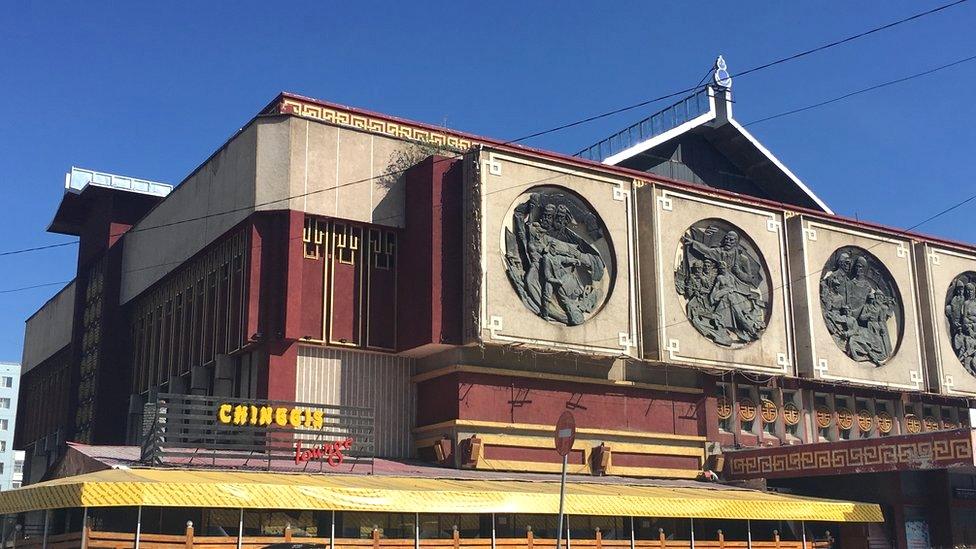
Repatriated dinosaurs are now housed in the capital city Ulaanbaatar's former Lenin Museum
Gabriel Santos, collections manager at California's Alf Museum of Paleontology, has been working on the moveable museum and says adults also benefit from this education.
"Most, if not all, of the teachers we train had no idea that some dinosaurs had feathers, so the people who live so close to where Velociraptor was first found had no idea what it looked like."
Another palaeontologist leading the workshops, Michael Ziegler from the Florida Museum of Natural History, says the aim is to train local people to give dinosaur tours themselves. "Exposure is the biggest thing, starting from the ground up. In the bus, we interacted with every student and then coming back, they brought their parents along to teach them, too."
The prospective tourism benefits generated by dinosaur knowledge are a focus for Bulgan mayor, Munkh-Aldar Tumurbat.
"Our strategy is a nature friendly tourism development without mining activities and licences in our territory," he tells the BBC.
"Eight-year-olds to their 80-year-old grandparents in our town should know about palaeontology and when and how dinosaurs lived."
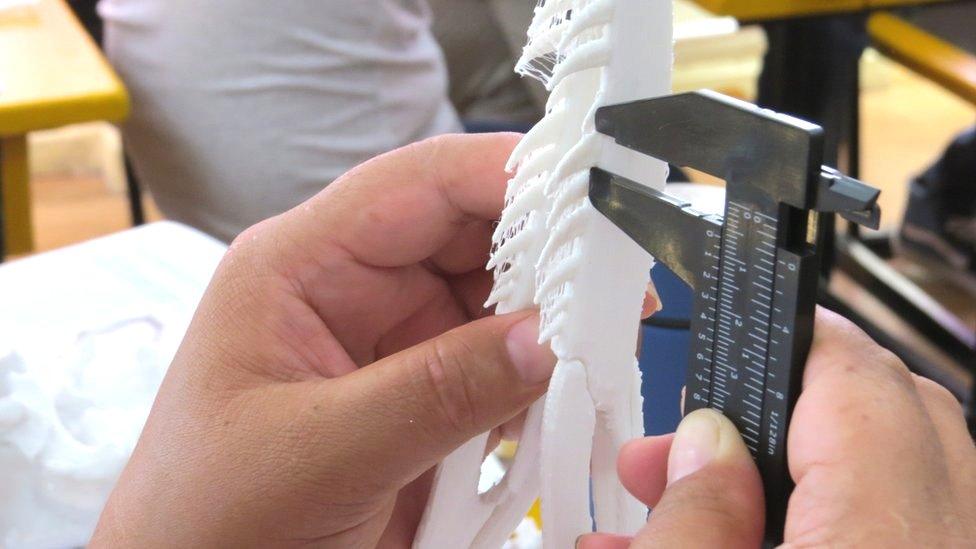
The mobile museum's 250-sq-ft exhibit space has displays such as teeth replicas
Mayor Tumurbat says that annually 90% of Mongolia's tourists visit the Gobi Desert and Bayanzag's Flaming Cliffs.
Twelve years ago, there were three tourist camps and 13 mining licences granted in Bayanzag, but Mayor Tumurbat says that he has changed this to only one mining licence, which is due to be cancelled, and now 10 tourist camps. This he hopes will boost local palaeontological tourism.
"Currently, the citizens are getting very small benefits directly to their pockets by running small cafés, stores and a gas station - we need to create opportunities for our community to benefit from tourism," he adds.
The next step for the institute is building a museum at the site and teaching local people to use drones to undo the legacy of fossil poaching.
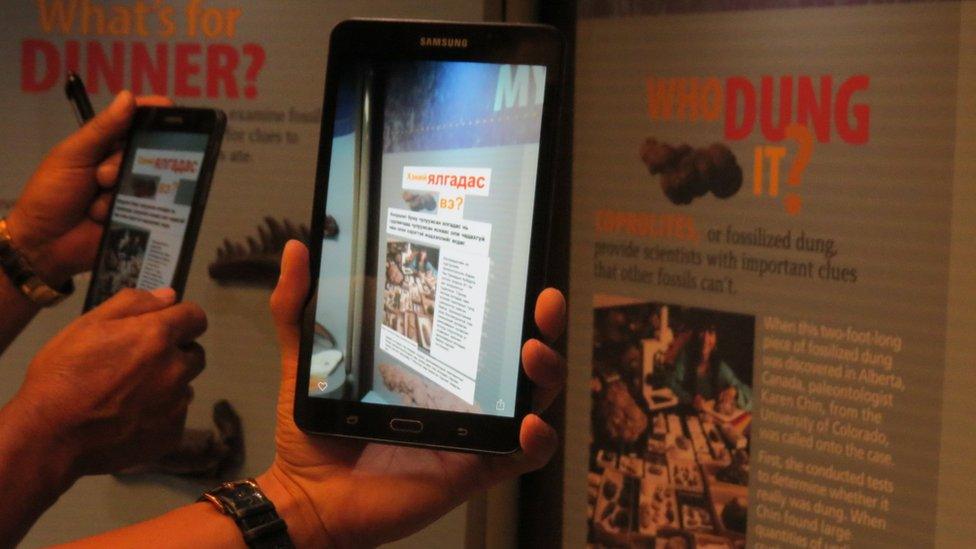
An augmented reality app can overlay Mongolian translations on English signage
"Then they can monitor fossils at their fossil sites so they can do the protection and document the illegal activity," Bolortsetseg explains.
"We're waiting for the western part of Mongolia to have paved roads to take the bus museum to the mountains," she adds. And with half of the country's population under 35 years old, Bolortsetseg is working to introduce palaeontology on to the national curriculum within the next three years.
"We want to reach every single child in the country and spread the message that Mongolia's scientific history is part of its heritage and should not be smuggled out of its borders," she says.
Eleventh-grader Nyambayar agrees: "We need to start from ourselves by protecting dinosaurs. Then other people will follow us.
"If we have knowledge on dinosaur fossils and share this knowledge with others, then things can change."
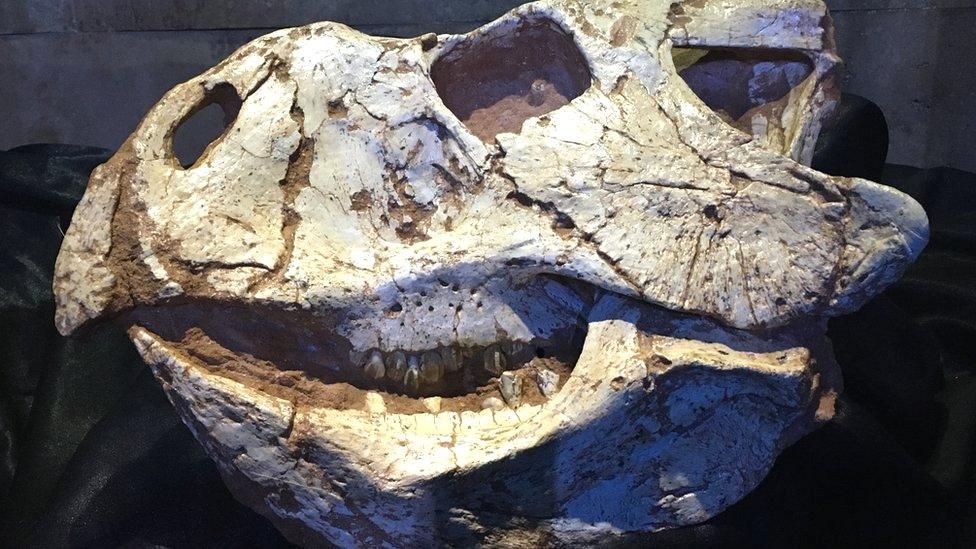
A Protoceratops skull in Ulaanbaatar's Central Museum of Mongolian Dinosaurs